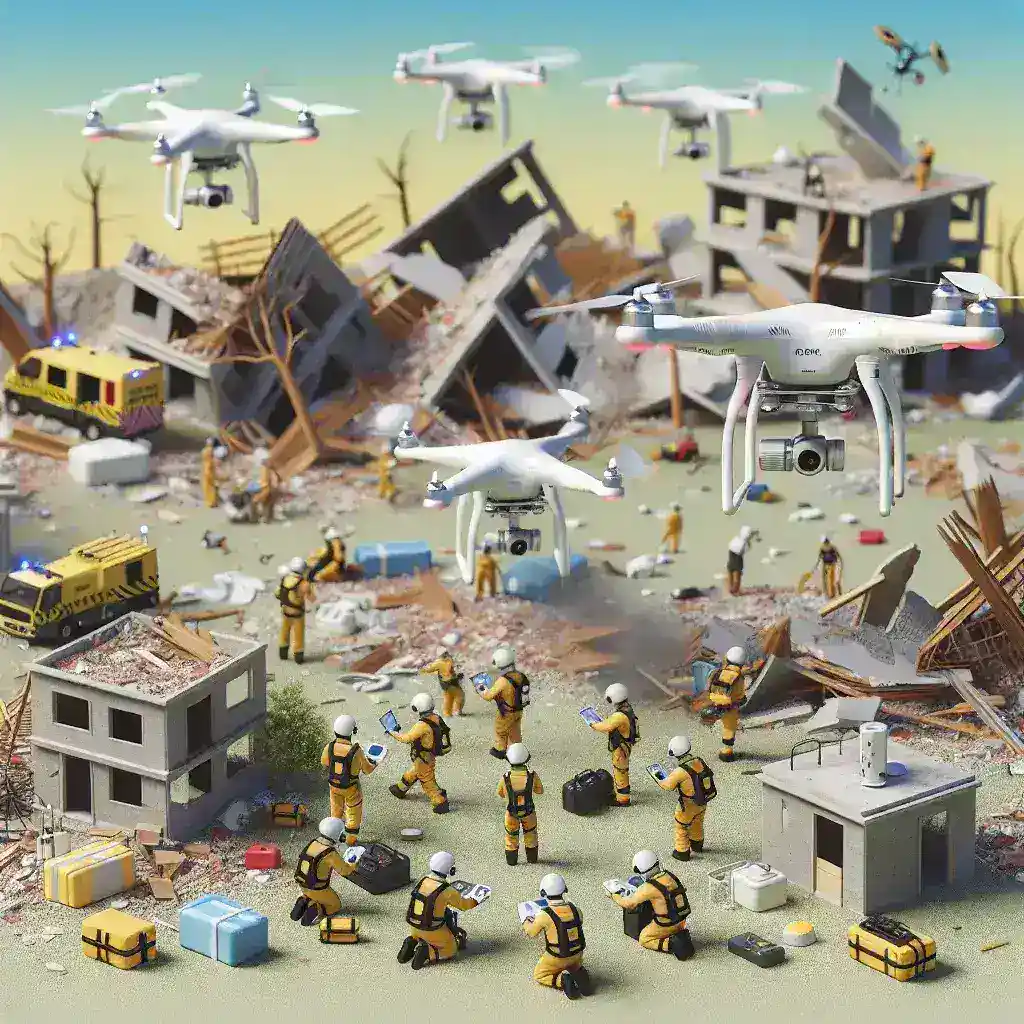Introduction
In recent years, drones have emerged as a powerful tool in various fields, including disaster response and rescue operations. These unmanned aerial vehicles (UAVs) offer a range of capabilities that can enhance situational awareness, streamline logistics, and ultimately save lives when every second counts. In this article, we will explore how drones are being used in disaster scenarios, the technology behind them, and their impact on rescue efforts.
The Role of Drones in Disaster Response
Drones play a multifaceted role in disaster response, serving numerous functions that aid emergency service providers. Here are some of the main applications:
- Search and Rescue Operations: Drones equipped with high-resolution cameras and thermal imaging can search large areas quickly and efficiently, identifying survivors hidden beneath debris or in hard-to-reach locations.
- Damage Assessment: After a disaster strikes, drones can capture aerial footage of the affected areas to assess damage and help emergency responders prioritize resources effectively.
- Delivery of Essential Supplies: Drones can deliver medical supplies, food, and water to isolated or inaccessible regions, ensuring aid reaches those in need promptly.
- Real-time Surveillance: Drones provide live video feeds and data analytics to incident commanders, allowing for better situational awareness and informed decision-making in dynamic environments.
- Mapping and Geospatial Analysis: Drones can produce high-resolution maps and 3D models of disaster areas, facilitating planning and recovery efforts.
Types of Drones Used in Disaster Response
Various types of drones are employed in disaster response, each designed for specific tasks:
- Fixed-Wing Drones: These drones are ideal for covering large distances and can fly for extended periods, making them suitable for surveying vast disaster zones.
- Multicopter Drones: These versatile drones are capable of hover and vertical takeoff and landing (VTOL). They are particularly useful for close-up observations and search operations.
- Hybrid Drones: Combining the features of fixed-wing and multicopter drones, hybrid drones offer the best of both worlds—long flight durations with the ability to carry heavier payloads.
Case Studies: Drones in Action
1. Earthquake Response in Nepal
Following the devastating earthquake in Nepal in 2015, drones were deployed to map the affected regions, assess damages, and locate survivors. The use of drones accelerated the response efforts, providing critical data to aid organizations and enabling them to deliver timely assistance.
2. Hurricane Harvey in Texas
During Hurricane Harvey in 2017, drones were utilized for search and rescue missions, including locating stranded individuals and animals. The real-time video feeds allowed emergency crews to coordinate rescue efforts effectively. Moreover, aerial imagery helped identify areas that required immediate relief, prioritizing resources where they were needed most.
3. Wildfires in California
Drones have become an invaluable asset in combating wildfires in California. Equipped with thermal imaging, drones can detect hotspots, monitor fire progression, and assist in planning evacuation routes. They also provide real-time data to firefighting teams, enabling better strategic decisions.
Technological Innovations Enhancing Drone Capabilities
As technology continues to evolve, so do the capabilities of drones used in disaster response:
- Advanced Sensors: Modern drones come equipped with highly sophisticated sensors, including LiDAR, allowing for accurate topographical mapping and analysis.
- Machine Learning and AI: Artificial intelligence can enhance drones’ ability to detect patterns and recognize individuals, significantly improving search and rescue outcomes.
- Automated Flight Systems: Drones can be programmed for autonomous flights, allowing for pre-planned missions that require minimal human intervention and maximizing operational efficiency.
- Swarm Technology: Drones can work together as a swarm to cover larger areas more quickly than individual units, sharing data in real-time to enhance coordination and efficacy.
Challenges and Limitations
Despite their impressive capabilities, the use of drones in disaster response faces several challenges:
- Regulation and Airspace Management: Navigating complex regulations and airspace restrictions can limit drone operations, especially in populated areas.
- Battery Life and Range: Although technological advancements have improved battery performance, many drones still have limited flight times and ranges, necessitating careful mission planning.
- Data Privacy and Security: The extensive data captured by drones can raise concerns regarding privacy and the secure handling of information, which emergency responders must address.
Future of Drones in Disaster Response
As the technology evolves, the future of drones in disaster response looks promising. Key trends that are likely to shape this future include:
- Increased Integration with Ground Operations: Drones are expected to become an integral part of coordinated response strategies, working alongside ground teams for more comprehensive operations.
- Enhanced Communication Technologies: The development of robust communication systems will facilitate data sharing and operational coordination among various stakeholders during disasters.
- Expanded Applications Beyond Traditional Disasters: Drones will increasingly be used for preparedness and mitigation strategies, enhancing capabilities not only during disasters but also in planning and training exercises.
Conclusion
Drones represent a transformative tool in the field of disaster response and rescue operations. Their ability to provide valuable real-time data, deliver essential supplies, conduct search and rescue missions, and assess damages significantly enhances the efficiency and effectiveness of emergency services. As technology continues to advance, the role of drones in disaster response will likely expand, leading to better preparedness and improved outcomes in emergencies. The connection between technology and humanitarian efforts showcases a bright future where lives can be saved, and disasters can be managed with unprecedented proficiency.

